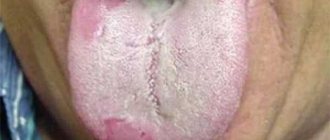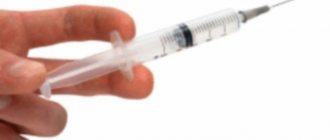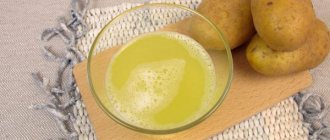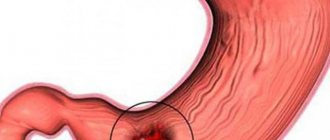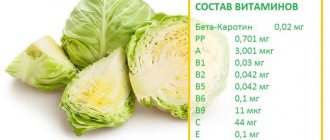Solcoseryl for stomach ulcers
Ulcerative lesions of the mucous membranes of the stomach and duodenum are chronic pathologies that periodically worsen.
Relapses are accompanied by acute pain in the epigastrium. At this time, ulcerative defects become inflamed. With timely relief of attacks, a period of remission or calm begins. During an exacerbation, the affected tissues of the mucous epithelium lack oxygen due to slow blood supply and blood loss.
This inhibits the healing process, which is fraught with the development of necrosis, that is, tissue death without the possibility of regeneration or drug restoration.
Therefore, in most cases, patients with ulcers are prescribed the drug "Solcoseryl", which gives a powerful biogenic effect for ulcerative lesions of the gastric mucosa.
Description and features of the medicine
The action of the drug "Solcoseryl" is aimed at improving metabolic processes, accelerating the transfer of oxygen and glucose in the blood to damaged tissues, which stimulates their regenerative function.
This biogenic medicine is obtained from the blood of newborn calves, which is previously purified in a special way from the protein mass.
This release of the extract from the reactive protein makes it possible to reduce the antigenic effect of the drug.
The drug saturates tissues with purine and amino acids.
Medicine is prescribed in the form of gels, jellies, creams, pastes for external, that is, local use. Injection options are administered intramuscularly or intravenously. For open gastric ulcers, only Solcoseryl injections are used. You can take pills. The injection solution is offered for sale in ampoules of 2 ml, of which there are 10 units in one box.
The main advantage of Solcoseryl is its ability to saturate damaged tissues with the help of the active ingredient with substances such as purine and amino acids. These components are needed to ensure proper metabolism. The presence of polypeptides allows you to maintain the normal functioning of tissues in the body.
A combination of biogenic injections and antibiotics is acceptable.
What effect does a Solcoseryl injection have on a stomach ulcer?
The unique properties of Solcoseryl lie in the supply of oxygen to the tissues of the affected organ, which stimulates natural regeneration processes at the cellular level. This allows you to increase the speed of healing of affected areas on the walls of the stomach and intestines.
Constant injections of the drug activate specific enzymes that participate in redox reactions taking place in the intestines. This promotes the growth of new epithelium with fibrin. Consequently, the medicinal purposes of Solcoseryl are as follows:
- acceleration of recovery processes;
- increasing the speed of healing;
- prevention of tissue death (necrosis) and oxygen deficiency;
- stimulating sufficient blood supply in the vessels of the affected epithelium.
Taking the drug has a general strengthening effect, normalizes sleep, improves mood, and gives vigor.
Instructions for the use of injections for gastric ulcers
The medicine is offered for intravenous and intramuscular injection.
The therapeutic course of the drug has a positive effect on the basic chemical and physical properties of the stomach.
Instructions for use contain information about the ability of the medication to activate internal processes responsible for the self-regulation of destroyed tissues in the mucosa. At the same time, improvements are noted not only on the side of the stomach and intestines, but also on the liver tissues.
At the same time, accumulated toxins are neutralized biologically.
The duration of the course of treatment with Solcoseryl for stomach ulcers is determined individually, based on the anamnesis of the ulcer patient. The classic scheme lasts 30-60 days, which allows you to achieve good scarring of open defects in the protective epithelium.
If the patient is prone to seasonal exacerbations, it is recommended to extend the course to two weeks with the frequency of injections given 1-2 times every 7 days. The medicine is offered for intravenous and intramuscular injection. Packaging is carried out in ampoules of 2, 5, 10 ml. Rules for the administration of "Solcoseryl" for intramuscular administration according to the instructions:
- In the first 24 hours from the onset of an exacerbation, 1 ampoule of 2 ml is used.
- Over the next 48 hours, the dosage is doubled.
- Over the next 72 hours, the dose of the medicine is 6 ml.
- For the remaining 18 days, the amount of the drug is maintained at 6 ml.
To exclude the possibility of an allergic reaction, a test injection of 0.5 ml should be given.
The rules for intravenous administration are based on a slow infusion of the solution. It is prohibited to use other pharmacological agents at the same time.
During an exacerbation, three 3 ml infusions per day are prescribed. During the remission period, the frequency decreases. For prophylaxis at the stage of complete calm, the drug is administered intramuscularly once a day.
When used correctly, the medicine can cure stomach ulcers at an early stage.
Contraindications to Solcoseryl injections
- Hypersensitivity to ingredients.
- Age group up to 18 years.
- Lactation period.
- Pregnancy.
Drug analogues
An analogue of Solcoseryl in terms of the active component is Actovegin, obtained from deproteinized calf blood dialysate.
In terms of application, another drug, Curantil, is close to Solcoseryl. But along with a positive effect on regeneration processes, this analogue has many side effects, and its effect is significantly lower.
Source: https://TvoyZheludok.ru/yazva/lechit/solkoseril-ukoly-pri-yazve-zheludka.html
Solcoseryl in ampoules for treatment of atrophic gastritis - gastris.ru
Gastritis is a common and serious disease that can potentially cause complications. Therefore, its treatment must begin in the early stages.
Coping with acute gastritis is easier than getting rid of the chronic form. There are a large number of medications available to treat stomach problems. One of them is Solcoseryl.
The main property of the product is to stimulate the healing processes of damaged gastric mucosa.
The procedure for taking Solcoseryl for gastritis is determined by the doctor.
What is solcoseryl
In addition to the medications given above as additional injections, modern medicine offers a special drug. The remedy produces a quick positive effect, which explains its endless popularity among people with a sick stomach or developing duodenal ulcers.
We're talking about solcoseryl. This drug of biogenic nature is considered the best on the medical market. The injections were first used in Switzerland; the blood of calves is used for production. This fact does not change patients’ opinions about the drug. In addition to the controversial component, the composition includes other important substances:
These elements represent a unique composition of substances that ensures, maintains, and restores proper metabolism. The main object becomes the intestines. Under the influence of the drug, enzymes are activated that help the body carry out the redox process.
Solcoseryl for stomach ulcers makes a strong impression on patients: the effectiveness of the medicine is amazing, patients say that after a week of injections the pain syndrome decreases and spasms disappear.
Side effects and overdose
Side effects can be local and general.
The instructions for use do not contain information regarding exceeding doses of the drug. Allergy tests should be done before use. To do this, inject 0.5 ml intramuscularly and monitor the reaction for 24 hours. Possible adverse events may include:
- redness;
- rash;
- swelling at the injection site;
- itching;
- increased body temperature;
- difficulty breathing;
- anaphylactic shock.
Question: What is the treatment for atrophic gastritis?
The site provides reference information for informational purposes only. Diagnosis and treatment of diseases must be carried out under the supervision of a specialist. All drugs have contraindications. Consultation with a specialist is required!
What is the treatment for atrophic gastritis?
Therapy for atrophic gastritis is individual and determined by the stage of the disease and the secretory function of the stomach. During the treatment period, be sure to follow a diet based on crushed food, which does not contain coarse fiber. Food should be steamed or boiled.
Fried, salted, smoked, pickled, spicy, pickled, sour and spicy foods must be completely excluded from the diet. You should eat boiled meat and fish, soups with weak broth, cereals, dairy products, boiled vegetables and fruits. For drinks, use jelly, mousse, weak tea, jelly, mineral water, cocoa.
The diet for atrophic gastritis is equivalent to the diet for gastritis with low acidity of gastric juice (table No. 2).
In addition, for atrophic gastritis, the following medications must be used:
1.
Juice preparations that enhance the production of hydrochloric acid. Such drugs include Plantaglucid and Limontar granules. Plantaglucide is taken 1 teaspoon three times a day 20 minutes before meals.
Limontar take 1 tablet three times a day 20 minutes before meals.
In order to enhance the production of hydrochloric acid, mineral waters Narzan, Essentuki No. 4 and No. 17, Mirgorodskaya, rosehip decoction, cabbage, tomato and lemon juice are also used.
Solcoseryl injections for stomach ulcers: instructions for use
Gastric and duodenal ulcers are chronic recurrent diseases that alternate between periods of exacerbation and remission. With relapses, the clinical picture worsens, pain in the epigastric and stomach areas is unbearable, and the pain is caused by inflammation of the ulcerative lesions.
When the mucous membranes are damaged, there is a lack of oxygen in the blood, bleeding, and blood supply is disrupted, which contributes to the development of necrosis. Regular treatment prolongs remission, improves digestion, and normalizes the condition of the lining membranes.
One of these drugs is Solcoseryl in capsules and injections.
What is Solcoseryl?
The therapeutic effect is aimed at improving metabolism, accelerating the transport of oxygen along with glucose for rapid healing of affected areas of the mucous membranes. Removing the protein mass from the blood of young calves - the main component - makes it possible to reduce the antigenic effect and improve the perception of the drug by the human body.
In addition, Solcoseryl for ulcers saturates the tissues of internal organs with purines and amino acids; today it is produced in the form of creams, pastes, injections, dragees and even jellies. For severe and often recurrent ulcers, it is advisable to prescribe injections; to maintain remission, it is better to use pills.
Solcoseryl injections
The main advantage of the drug is the ability to saturate blood vessels in areas of ulceration with oxygen, improve metabolism, normal development and renewal of connective tissue and mucous membranes. The biogenic drug combines well with antibiotics, which is important when an infectious process occurs.
You should know it
The instructions for use of the drug from the Swiss company describe in detail what effect it has on the body. Solcoseryl has another unique property - it triggers a self-healing mechanism, that is, self-regulation of disorders of the mucous membrane of the digestive organ occurs.
. And not only does the stomach feel better, but also the liver
. The drug removes toxic substances accumulated due to the disease from the body.
The duration of therapy using Solcoseryl depends on the degree of inflammatory processes. As a rule, 1-2 months are enough for the ulcers to heal completely.
Important! The simultaneous use of antibiotics and the use of Solcoseryl injections has no contraindications. The medicine is not addictive.
Pharmacological properties of the drug and effectiveness in pathology
The composition of the drug Solcoseryl includes purified blood of young calves, which has a powerful biogenic effect, enhances the effect of basic medications for the treatment of ulcerative lesions of the stomach and intestines. The therapeutic effect consists of the following effects:
- improving blood supply to tissues in the area of mucosal lesions;
- increased regeneration of lining epithelial cells;
- saturating cells with oxygen, accelerating glucose utilization;
- increased collagen synthesis due to increased phosphorus metabolism;
- increased energy in cells and increased intercellular substance in the lining of the stomach or intestines.
There are no exact data on the rate of absorption, excretion and time of distribution in the tissues of internal organs. When prescribing, they are guided by the severity of the disease, concomitant therapy, and the risks of complications.
Indications for use
Solcoseryl for gastric ulcers is prescribed as complex therapy for exacerbations and as an independent drug for chronic conditions to prolong remission. The main indications for the use of the drug Solcoseryl in injections and tablets (dragees) are:
- disruption of blood flow in the gastrointestinal tract and in areas of any other location;
- venous insufficiency of peripheral venous structures and vessels;
- internal bleeding (including the consequences of massive bleeding of the gastrointestinal tract).
Solcoseryl is used for disorders of the blood flow of the gastrointestinal tract. The drug is prescribed to restore blood flow in the brain, to saturate blood cells with oxygen, improve the overall tone and resistance of the body to various negative factors. Solcoseryl will help restore the body after surgery for complications of gastrointestinal ulcer.
When is it prescribed?
"Solcoseryl" is a universal remedy that will help in the treatment of stomach ulcers and other pathologies associated with metabolic disorders and tissue regeneration. Actively used for the following problems:
- duodenal ulcer;
- disruption of blood circulation in the brain and other internal organs;
- trophic ulcerative formations;
- problems with blood circulation in the extremities;
- bedsores.
Independent use of Solcoseryl is unacceptable. Causes side effects.
THIS IS REALLY IMPORTANT! Right now you can find out a cheap way to get rid of stomach pain. FIND OUT >>
Directions for use and dosage
As a complex treatment for ulcerative lesions of the gastrointestinal tract, Solcoseryl is prescribed in the form of an injection solution and tablets. Both dosage forms penetrate the gastrointestinal tract and provide an active direct effect at the site of damage to the mucous membranes.
Injections
Solcoseryl injection solution is prescribed for intramuscular and intravenous administration. The solution has a yellowish-straw hue, a transparent consistency and the smell of beef broth.
The active component of the solution is deproteinized dialysate from the blood of young calves; 1 ml of solution contains 42.4 mg of purified calf blood. The solution complements saline solution for injection.
The drug in the form of injections is dispensed in ampoules of 2 and 5 ml in packs of 5 pcs.
The therapeutic effect of Solcoseryl injections for ulcers is achieved due to the effect of the active component on the biochemical and physical properties of the gastrointestinal tract, namely, restoration of affected tissues, activation of internal processes of regeneration of mucous membranes. At the same time, not only the condition of the stomach and intestines improves, but also the liver, organs of the hepatobiliary system, and hematopoiesis. The body is also cleansed of toxins and waste.
The duration of injection varies from 1 to 2 months; it is during this period that significant therapeutic results can be achieved.
According to the results of endoscopic studies, healing of ulcerative defects of the mucous membranes and improvement of tissue trophism are noted.
For a recurrent ulcer, the course of treatment is 2-3 weeks, 2 injections per week, then take a break and continue the course. The instructions suggest the following treatment regimen:
Source: https://polic-5.ru/lechenie/solkoseril-ukoly-pri-yazve-zheludka.html
Indications for use
The drug Solcoseryl is prescribed in neurology, gynecology, traumatology, gastroenterology, dermatology, for congestion in peripheral vessels.
In the therapeutic regimen being drawn up for a particular problem, Solcoseryl is not used in the singular.
Its use significantly increases the effectiveness of treatment, which has been repeatedly proven in practice.
Based on the characteristics of Solcoseryl, it is prescribed for the treatment of a number of diseases:
- trophic ulcers;
- 2nd and 3rd degree burns;
- gangrene stages 1 and 2;
- injuries to the eye corneas;
- radiation injuries present on the skin;
- ulcers of the stomach and duodenum;
- hemorrhagic strokes;
- ischemic heart diseases;
- disorders of blood circulation in the brain and limbs caused by senile dementia, vascular obstruction, and venous pathology;
- bedsores;
- mucosal erosions;
- frostbite.
The use of solcoseryl for stomach ulcers: what is the secret of a unique remedy
Solcoseryl for stomach ulcers, instructions for use - this is the minimum knowledge that needs to be mastered by those suffering from this disease, as well as close people of the patient with an ulcer.
Solcoseryl for stomach ulcers is a proven, effective remedy from a Swiss company, made from calf blood. This remedy was invented a long time ago and is still used today as a potent wound healing agent.
It all starts small
Peptic ulcer disease is a chronic disease with a polycyclic course, characterized by the occurrence of an ulcerative defect in the mucous membrane of the stomach and duodenum.
An ulcer of the digestive organ, as a rule, is a consequence of severe inflammation of the walls of the stomach. May be the result of untreated Helicobacter gastritis. There is an ulcer as an independent disease, and there are secondary symptomatic and gastroduodenal ulcers, provoked by stress, circulatory disorders, taking certain anti-inflammatory drugs, etc.
Gastritis is an inflammation of the stomach lining. Due to a pathological process in the digestive organ:
- nutrients that come with food are less easily absorbed;
- the activity of all systems is disrupted, metabolism suffers;
- sometimes this leads to increased acidity, which destroys the walls of the stomach;
- sometimes leads to a lack of acid, as a result of which food is poorly digested, stagnates in the stomach, and enters the intestines with a delay.
The result of advanced gastritis, as a rule, is a stomach and duodenal ulcer or atrophy of the gastric mucosa, or cancer.
What is the secret of this unique product?
Solcoseryl for gastritis is an instant lifesaver that quickly and effectively eliminates the symptoms of the disease and reduces the inflammatory process. This is a biogenic stimulant. It activates the processes of regeneration and metabolism in the body, eliminates inflammation, and how this happens is still not completely clear to science.
In general, biogenic stimulants are formed in the tissues of animals and plants in stressful situations under the influence of unfavorable conditions (cooling, being in the dark, etc.).
This is how nature made sure that living organisms had a chance to survive, despite everything. The nature of biological stimulants still remains a mystery to science.
As a rule, biological stimulants are a complex complex of substances.
With stomach and duodenal ulcers, ulcers threaten to perforate the walls of the stomach, causing a severe inflammatory process of the entire peritoneum and gastrointestinal tract. This usually leads to death.
Several injections of Solcoseryl allow you to saturate the tissues with oxygen, which contributes to the rapid healing of all ulcers. Moreover, this remedy also leads to the regeneration of epithelial tissue, that is, it restores the mucous membrane of the digestive organ.
The product in action
Treatment of such a dangerous pathological condition as a stomach or duodenal ulcer should always be carried out under the supervision of a doctor. Self-medication for ulcers is life-threatening!
If the doctor prescribes and recommends for use the Swiss drug Solcoseryl, the instructions for use, injections for stomach ulcers (as Solcoseryl is sometimes called) should be studied in more detail.
It has been proven by practice that in most cases, injections for stomach ulcers (Solcoseryl) in the general treatment regimen significantly improve the effectiveness of therapy. Unpleasant sensations such as nausea and heartburn noticeably decrease within a week. The pain that occurs (a characteristic sign of a peptic ulcer) subsides and disappears after 1-2 weeks.
And in general, the general well-being of patients improves greatly: appetite appears, good mood appears, irritability and nervousness disappear.
How to enter
Solcoseryl injections for ulcerative process can be administered either intramuscularly or intravenously. The first option is the most common. For the intramuscular option, the following scheme is used:
- on the first day, one 2 ml ampoule of the product is enough;
- on the second day this dose is twice as large;
- on the third day and in the next 18 days, 6 ml injections are administered.
If you administer the drug intravenously, you must do it very slowly, without mixing the medicine with any other drugs.
Combined strength
Solcoseryl, as a rule, is not the only remedy for the treatment of ulcerative disease of the digestive organ. It is in addition to the main drug treatment. The drug comes not only in ampoules, but also in the form of dragees.
Its main purpose:
- stimulate blood supply to the mucous membrane of the digestive organ;
- accelerate scarring of ulcers;
- activate the regenerative capabilities of cells;
- prevent atrophy of the gastric mucosa;
- improve metabolism and immunity.
By strictly following the instructions for using the Swiss drug, treating the disease strictly according to the regimen suggested by the doctor, and following dietary recommendations, stomach ulcers can be treated more effectively. Of course, subject to a healthy lifestyle and giving up bad habits.
Source: https://GastroDok.com/bolezni-zheludka/solkoseril-pri-yazve-zheludka-instrukciya-po-primeneniyu-ukoly.html
Solcoseryl for stomach ulcers instructions for use
For gastric ulcers, the complex of therapy includes drugs that accelerate the healing process of the affected mucosa, antibiotics, antacids and histamine receptor blockers. Medicines with regenerating properties are preferably used in the form of injections.
Medicines that accelerate the restoration of damaged tissues occupy a central place in the treatment of gastric ulcers, increasing the effect of the entire complex. The drug Solcoseryl for stomach ulcers is used to restore trophism and stimulate scarring of erosions on the walls of the stomach.
The product is produced in several dosage forms: gel, ointment, dragees, paste, ampoules. In the complex treatment of stomach ulcers, only the ampoule form is used.
The use of the injection form of Solcoseryl for ulcers
Peptic ulcers of the stomach and duodenum are characterized by the formation of lesions on the mucous membrane of varying sizes and depths.
Due to poor supply of oxygen and necessary substances, hypoxia occurs, tissues lose the ability to recover on their own, and there is a risk of cell death without subsequent opportunity to restore them. Without treatment, stomach and duodenal ulcers can result in perforation and death.
Stimulation of self-healing and scarring processes is an important part of the complex of therapy for peptic ulcer disease. The faster the erosive changes begin to scar, the faster the patient will return to normal life.
Properties of the injection form of Solcoseryl
The drug is produced from the blood of young calves by deproteinization (protein separation). In its cell mass it contains low molecular size amino acids, oligopeptides, microelements, and electrolytes.
Solcoseryl restores nutrition and oxygen supply to organs and tissues, starts the process of formation of collagen fibers, regeneration and self-healing. Thanks to improved oxygen and glucose saturation, cell energy increases, the number of amino acids increases, and adenosine triphosphoric acid is rapidly broken down.
Pharmaceutical factories have not invented synthetic analogues of Solcoseryl. A similar ampoule form for the active component is Actovegin.
https://www.youtube.com/watch?v=z3Tne5y7N3c
Solcoseryl for peptic ulcers is prescribed not only to accelerate the healing of damaged mucosa, but also to prevent necrosis in inflamed areas during hypoxia of internal organs. During the course, toxic compounds are eliminated, liver function improves, the functioning of other organs improves, well-being returns to normal, appetite and good sleep return.
Solcoseryl has a direct effect on the digestive organs:
- new epithelial cells occur;
- enzymes responsible for redox reactions in the intestines are activated;
- vascular circulation improves.
The drug does not pass through the excretory system and is completely absorbed by the body; this is due to its natural origin and the similarity of cells to human cells.
According to the instructions for use, the use of Solcoseryl for stomach ulcers does not cause addiction or withdrawal symptoms. No cases of overdose have been reported.
After 4-7 days from the start of therapy, symptoms typical for peptic ulcer disease disappear:
- nausea;
- pain in the epigastric region;
- belching;
- increased salivation;
- heartburn.
The injection form of Solcoseryl is the first choice for the treatment of erosive changes in the mucous membrane of the gastrointestinal tract in the following groups of patients:
- in the elderly;
- for diabetes;
- in hypertensive patients;
- with coronary heart disease.
According to the instructions for use, Solcoseryl in injections for stomach ulcers does not have a sedative effect, drowsiness, or decreased attention, so it is possible to drive a car during treatment.
Interaction and compatibility with other medications
Antibiotics are included in the treatment of peptic ulcers caused by Helicobacter pylori. In the instructions for using Solcoseryl in injections, the manufacturer does not prohibit combining it with antibiotics for stomach ulcers. The main advantageous feature of the drug is its compatibility with antacids and histamine blockers.
It is prohibited to combine:
- with natural herbal remedies;
- with intravenous or subcutaneous forms of Ginkgo biloba, naftidrofuryl.
Use with caution in combination with medications that increase potassium levels (potassium-sparing diuretics, vitamin-mineral complexes with potassium).
Side effect
Solcoseryl has a natural biogenic composition, so it is well tolerated. During production, proteins that have an antigenic effect are removed from the concentrate, so adverse reactions are rarely observed.
A rare number of patients experience:
- allergic rash in the form of urticaria;
- slight increase in body temperature to subfebrile levels;
- Swelling and redness may be observed at the injection site.
If side effects occur, the injections are canceled and symptomatic therapy is prescribed.
Packaging and components of Solcoseryl in ampoules
1 ml of the drug contains 42.5 mg of the active substance (young calves blood concentrate), the auxiliary solvent is water. The solution in ampoules is transparent, yellow in color with a slight smell of meat broth.
Available in dark ampoules:
- 2 ml, 5 pieces in a blister pack, 5 in a cardboard box;
- 5 ml, 5 ampoules in contour packaging, 1 in a cardboard box;
- 10 ml, 25 pieces in a cardboard package.
For intravenous administration, there are ready-made infusion kits for 20% sodium chloride: 1 ml of calf blood concentrate, 250 sodium chloride, transfusion system and holder.
Contraindications
Treatment of stomach ulcers with Solcoseryl injections is prohibited in the following cases:
- children under 18 years of age (there are no studies on the safety of use);
- during pregnancy (no data on safety for the fetus);
- during breastfeeding (there are no data on safety for the baby and absorption into breast milk);
- in case of hypersensitivity to the active component;
- with intolerance or hypersensitivity to parahydroxybenzoic and free benzoic acid.
Solcoseryl in ampoules is prescribed with caution and under the supervision of a doctor in the following cases:
- hyperkalemia;
- renal failure;
- heart rhythm disturbances;
- oliguria;
- anuria;
- pulmonary edema;
- severe heart failure.
Dosage regimen and duration of therapy for the ampoule form of Solcoseryl
The dosage and duration of therapy is determined by the attending physician individually based on:
- age category of the patient;
- stages of disease development;
- concomitant diseases;
- condition of the affected gastric mucosa.
In the first stages of the disease and a small affected area, the doctor will prescribe Solcoseryl in injections according to the following scheme:
- During the day, 6 ml of the drug intravenously.
- In the evening, 2 ml of the drug intramuscularly.
If it is impossible to carry out intravenous infusion, the scheme changes to:
- During the day, 2 ml Solcoseryl intramuscularly.
- In the evening, 2 ml intramuscularly.
The duration of therapy in this case is two weeks.
In advanced stages with a large number of lesions, dosage and duration are as follows:
- On the first day, 1 ampoule of 2 ml is administered intramuscularly once.
- On the second day, the dose of the drug is doubled, 4 ml of solution is administered intramuscularly once.
- On the third day of therapy, the dose of Solcoseryl is increased to 6 ml intramuscularly once.
- For the remaining treatment period (eighteen days), the daily dosage remains unchanged - 6 ml once intramuscularly.
Standard regimen for acute gastric ulcers:
- For the first ten days, the solution is administered intramuscularly, 10 ml three times a day.
- The remaining days (from twenty to forty) the dosage is 5 ml once a day.
If the patient is prone to relapse, the doctor prescribes maintenance therapy lasting seven days, one injection of 2 ml intramuscularly.
During the period of exacerbation associated with atrophy, it is permissible to make intramuscular injections of the drug three times a day, 3 ml. Having achieved stable remission, the doctor reduces the dosage to the standard regimen.
Features of injection with Solcoseryl solution for stomach ulcers
When using intravenous injections of Solcoseryl for stomach ulcers, according to the instructions for use, it is prohibited to mix ampoules with other medications.
In order to check for tolerance and the absence of allergies, the doctor gives a preliminary injection in the amount of half a milliliter.
Intravenous infusion is carried out slowly over 60-120 minutes under the supervision of a doctor. The required dose is dissolved in a quarter liter of sodium chloride.
The manufacturer does not recommend administering more than 5 ml of the drug per intramuscular injection.
With the correct integrated approach to ulcerative lesions of the stomach and duodenum using Solcoseryl in ampoules, the damaged ones quickly scar. Only a doctor should prescribe medications, set the dosage regimen and duration of therapy after examination, taking into account the medical history and concomitant diseases.
Injecting Solcoseryl once will not give immediate results. Only course injections, taking into account the severity of the disease, are effective for stomach ulcers. After the full course, a re-examination is necessary.
In cases of unsatisfactory results, treatment is continued until complete restoration of the mucous membrane and functions of the gastrointestinal tract.
Source: https://yazvnet.ru/yazva-zheludka/solkoseril-pri-yazve-zheludka-instruktsiya-po-primeneniyu.html
Solcoseryl as a drug for the treatment of gastritis
Gastritis is a common and serious disease that can potentially cause complications.
Therefore, its treatment must begin in the early stages. Coping with acute gastritis is easier than getting rid of the chronic form. There are a large number of medications available to treat stomach problems. One of them is Solcoseryl.
The main property of the product is to stimulate the healing processes of damaged gastric mucosa.
The procedure for taking Solcoseryl for gastritis is determined by the doctor.
Features of the drug
Solcoseryl can be called a natural medicine, which consists of natural components. The raw material for production is blood extract of cattle. Blood is taken from calves.
But a mandatory step in the manufacture of the product is the release of blood from protein components. Unique properties allow the drug to accelerate the healing processes of the mucous membrane.
Regeneration of damaged tissue is the most important stage in the treatment of gastritis.
Beneficial properties are achieved due to the inclusion of low molecular weight elements in the serum. Solcoseryl also contains:
- nucleotide;
- nucleoside;
- glycoprotein;
- amino acids.
Many experts call the medicine one of the best in the fight against stomach disease, that is, gastritis. With an abundance of positive qualities, the product is used strictly as prescribed by the doctor.
First, the patient must undergo a comprehensive examination to identify the characteristics of the course of gastritis, its form and stage.
Instructions for use of the drug presuppose individual therapy for each patient, which the doctor selects based on an examination of the stomach, damage and general condition of the person suffering from gastritis.
Solcoseryl is available in several dosage forms. But in the case of a disease of internal organs, a course of intramuscular or intravenous injections is required. Only if you have medical training can you administer the medicine yourself. In other cases, it is strongly recommended that the course of treatment be carried out under the supervision of a doctor and with the help of specialists.
Contraindications
Gastritis worries a large number of people, who often independently select medications for treatment. A common mistake that can cost you your health and even your life.
Solcoseryl does not have many contraindications or side effects. Natural components ensure good absorption and have a beneficial effect on the gastric mucosa.
The product is capable of providing tissue regeneration and healing of wounds that form on the inner walls of the stomach during gastritis. Metabolic processes are restored, which allows you to feel relief within a few days from the start of treatment.
But, like other medications, Solcoseryl has certain contraindications. They must be taken into account before prescribing and treatment. If you belong to the category of people with contraindications, the doctor will definitely select alternative solutions.
- Age. Solcoseryl for gastritis is not recommended for patients under 18 years of age. The medicine is not prescribed for children, therefore there is no information regarding the safety of the medicine for this age category. There is a separate group of medications for children with gastritis.
- Pregnancy. Almost every medicine is on the list of prohibited drugs for pregnant women. Solcoseryl was no exception.
- Lactation. After childbirth, if the child is breastfed, the mother cannot treat her gastritis with Solcoseryl. Otherwise, there is a risk of developing allergies in children and other consequences.
- Increased sensitivity. Individual contraindications apply to those who are too sensitive to bovine blood dialysate, free benzoic acid and para-hydroxybenzoic acid derivatives.
- Problems with the cardiovascular system. The drug is contraindicated for those who suffer from heart rhythm disturbances and failure.
- Kidney diseases. Failure and other serious diseases affecting the kidneys require mandatory refusal to take this medicine.
- Hyperkalemia. These are metabolic disorders when the concentration of potassium in a person’s blood is exceeded.
If any adverse reactions occur after using the drug intravenously or intramuscularly, further use of Solcoseryl must be abandoned. Allergic reactions to exposure to Solcoseryl are rare. But such a possibility exists.
Signs of adverse reactions
If you do not know about the presence of hypersensitivity to the components or a tendency to allergic reactions in relation to the components of the drug Solcoseryl, it is recommended to undergo appropriate tests.
Side effects may be noticed during treatment. Signs of the development of a negative reaction of the body to Solcoseryl are:
- a person’s body temperature rises within a short period of time after administration of the drug;
- signs of hyperemia appear, the skin turns red and becomes hot in the injection area;
- swelling occurs at the injection site;
- symptoms of urticaria are clearly visible.
The presence of even one of the adverse reactions to the work of Solcoseryl implies mandatory cessation of its use. The doctor is obliged to conduct additional examinations and prescribe another drug to which your body will respond normally.
In the absence of contraindications, the course includes 10 to 12 days of injections. The dosage and number of injections per day are determined only by the attending physician. The dosage is individual, therefore there are no universal instructions for use.
If we talk about the cost of the drug in the form intended for injections (intramuscular and intravenous), then it depends on the number of ampoules in the package and their volume.
The minimum price is from 400 rubles, and the largest package of Solcoseryl costs approximately 1,300 rubles.
The use of any medicine against gastritis is impossible without consulting a doctor. Do not self-medicate as this may harm your health and worsen your stomach problem.
Stay healthy! Subscribe to our website, write your comments and wait for new interesting articles!
Source: //PobediGastrit.ru/lekarstva/solkoseril-pri-gastrite.html
Solcoseryl for stomach ulcers: instructions and dosages
During periods of exacerbation of gastric and duodenal ulcers, a person needs specific therapy. It is necessary not only to cope with the symptoms, but also to help the tissues recover. This goal can be achieved by taking Solcoseryl for stomach ulcers.
This is a biogenic agent aimed at improving metabolic processes and the absorption of oxygen by cells, activating tissue repair.
In what cases is the drug indicated for ulcers?
Thanks to various pharmacological forms of release, Solcoseryl is used not only externally as an ointment for skin wounds, but also internally - in the form of dragees or intravenous injections.
The drug is prescribed for ulcers both during periods of calm and during exacerbation - only the form of administration and dosage changes. Peptic ulcer disease is characterized by damage to the gastric mucosa of varying depths. They have a round shape, and an inflammatory process occurs along the edges.
At the same time, blood is poorly transported to these places and the cells lose their ability to regenerate. As a result, the tissues die, and the ulcer becomes larger. In order to prevent this process, and all the serious complications associated with it, doctors prescribe Solcoseryl.
In case of an open ulcerative process, exclusively intramuscular or intravenous injections or pills are prescribed. The choice in favor of one form or another is made by the attending physician based on the individual course of the disease. Solution for injection is available in pharmacies in 2 ml. in an ampoule.
Advantages of the drug in the treatment of ulcers
This drug is made from the blood extract of newborn calves; it has no antigenic properties. Solcoseryl is usually well tolerated by everyone; cases of an allergic reaction are extremely rare. But its main advantage is the ability to combine injections with antibacterial therapy.
Taking antibiotics, in turn, is a mandatory component in the treatment of ulcers caused by the activity of the bacterium Helicobacter pylori. According to modern research, this microorganism causes more than 70% of peptic ulcers and gastric lesions.
Most patients with this pathology have increased acidity of gastric juice. This forces them to take histamine H2 receptor blockers or antacids. They also combine well with Solcoseryl.
Another advantage of it over other similar drugs is the ability to saturate damaged cells with amino acids and purino acids. And polypeptides support the normal functioning of tissues in the human body. There are no synthetic analogs of Solcoseryl with the same properties.
Since the drug affects not only the ulcer itself directly, but also the entire body as a whole, after a course of taking Solcoseryl, patients experience an improvement in sleep, appetite, and general psycho-emotional state.
After surgery to remove an ulcer, the patient, at a certain stage of healing of the surgical incision, is recommended to apply ointment to the abdomen to quickly restore the integrity of the skin.
The drugs “Actovegin” and “Curantil” are similar in origin. But the effectiveness of the latter is significantly lower, and there are many possible side reactions.
A course of treatment
Of course, all drugs, even such as Solcoseryl, should be prescribed only by the attending physician. He will take into account:
- patient's age,
- stage of the disease,
- ulcer condition.
The doctor will also calculate the dosage and duration of taking the drug. Unfortunately, you should not expect any significant results with a single administration of Solcoseryl.
Dragee
As a continuation after injections, Solcoseryl orally in the form of tablets is prescribed in a course of 2 weeks, 100 mg three times a day. One tablet contains 40 mg. The dose may be increased or decreased, depending on the phase of development of the ulcer.
In this pharmacological form, Solcoseryl is produced only. The manufacturer recommends taking the pills for the complex treatment of various skin lesions, metabolic disorders, central and peripheral circulation.
Contraindications to taking all forms of Solcoseryl apply to persons under 18 years of age, pregnant and breastfeeding women, and people with individual intolerance to the active substance.
The drug is supplied to Russia from Switzerland, Macedonia and India.
Therefore, the standard regimen of drug treatment for ulcer patients should be supplemented with the drug Solcoseryl, which will help restore damaged tissue of the gastric mucosa.
Proper combination of it with a course of standard drug therapy for ulcers will help to significantly reduce the number of exacerbations per year.
It is also important to monitor the dynamics of the condition of the gastric mucosa before and after a course of Solcoseryl.
Source: https://gastrolekar.ru/yazva/solklseril.html
Drug interactions
Studies conducted on the interaction of Solcoseryl with various medicinal groups of drugs have confirmed some effect on therapeutic effectiveness. The anti-ulcer remedy Solcoseryl cannot be used simultaneously with the following drugs:
- potassium-containing products;
- nootropic and cerebral circulation stimulating drugs;
- various phytoextracts;
- glucose solutions, sodium chloride.
The inadmissibility of the combination enhances the effect of the drugs when taken simultaneously with Solcoseryl, increases the load on metabolism, and may disrupt the water-electrolyte balance.
Solcoseryl combines well with enterosorbents, probiotic complexes, non-steroidal anti-inflammatory and antispasmodic drugs, antacids for the symptomatic treatment of gastric and duodenal ulcers.
Solcoseryl injections for stomach and duodenal ulcers
For gastric ulcers, the complex of therapy includes drugs that accelerate the healing process of the affected mucosa, antibiotics, antacids and histamine receptor blockers. Medicines with regenerating properties are preferably used in the form of injections.
Medicines that accelerate the restoration of damaged tissues occupy a central place in the treatment of gastric ulcers, increasing the effect of the entire complex. The drug Solcoseryl for stomach ulcers is used to restore trophism and stimulate scarring of erosions on the walls of the stomach.
The product is produced in several dosage forms: gel, ointment, dragees, paste, ampoules. In the complex treatment of stomach ulcers, only the ampoule form is used.
Interaction of solcoseryl with other drugs
Solcoseryl injections are not recommended to be mixed for administration with other compounds, especially this requirement applies to phytoextracts.
The incompatibility of the pharmaceutical nature of Solcoseryl solution with the following parenteral types has been determined:
- Ginkgo biloba extract;
- naftidrofuryl;
- bencyclane fumarate.
To dissolve Solcoseryl, it is best to use an isotonic solution of sodium chloride and a five percent glucose composition.
